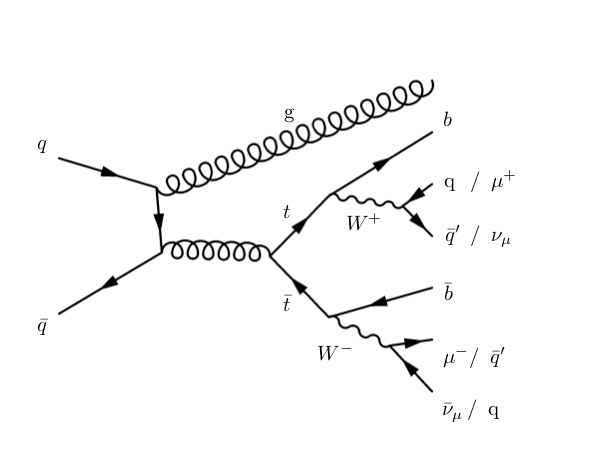
What does Bidirectional LSTM Neural Networks has to do with Top Quarks?
Last Updated on July 20, 2023 by Editorial Team
Author(s): Riccardo Di Sipio
Originally published on Towards AI.
And how it turned out that looking at a sequence of vectors in four dimensions from two opposite sides was the key to solve a decades-old problem

In a recent paper Bidirectional Long Short-Term Memory (BLSTM) neural networks for reconstruction of top-quark pair decay kinematics (preprint: arXiv:1909.01144), my summer student Fardin explored a number of techniques to reconstruct the decay chain of a fundamental particle called top quark that is abundantly produced at the LHC. This particle decays preferably into a W boson and a bottom quark (t→Wb). The W boson, in turn, can decay into a pair of quarks (W→qq’) in two-thirds of the cases or a charged lepton and a neutrino (W→lv) in the remaining one-third of the cases. The most common process leading to… Read the full blog for free on Medium.
Join thousands of data leaders on the AI newsletter. Join over 80,000 subscribers and keep up to date with the latest developments in AI. From research to projects and ideas. If you are building an AI startup, an AI-related product, or a service, we invite you to consider becoming a sponsor.
Published via Towards AI
Take our 90+ lesson From Beginner to Advanced LLM Developer Certification: From choosing a project to deploying a working product this is the most comprehensive and practical LLM course out there!
Towards AI has published Building LLMs for Production—our 470+ page guide to mastering LLMs with practical projects and expert insights!

Discover Your Dream AI Career at Towards AI Jobs
Towards AI has built a jobs board tailored specifically to Machine Learning and Data Science Jobs and Skills. Our software searches for live AI jobs each hour, labels and categorises them and makes them easily searchable. Explore over 40,000 live jobs today with Towards AI Jobs!
Note: Content contains the views of the contributing authors and not Towards AI.














